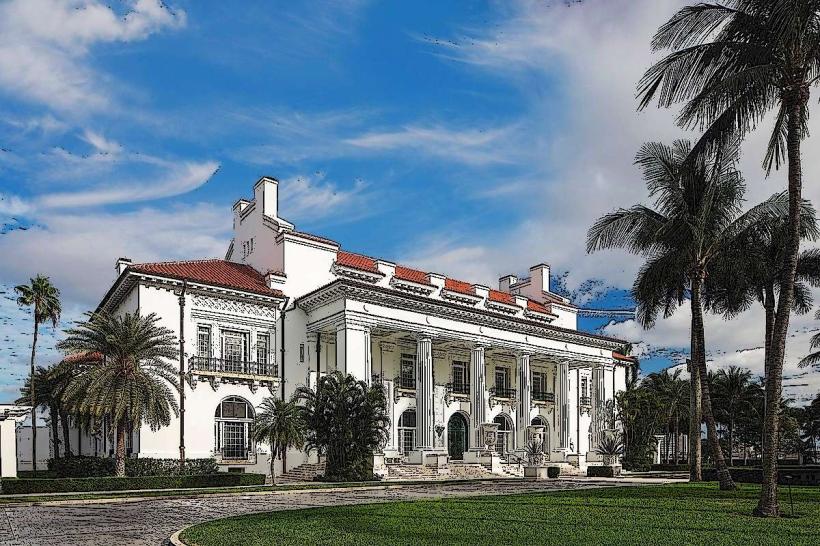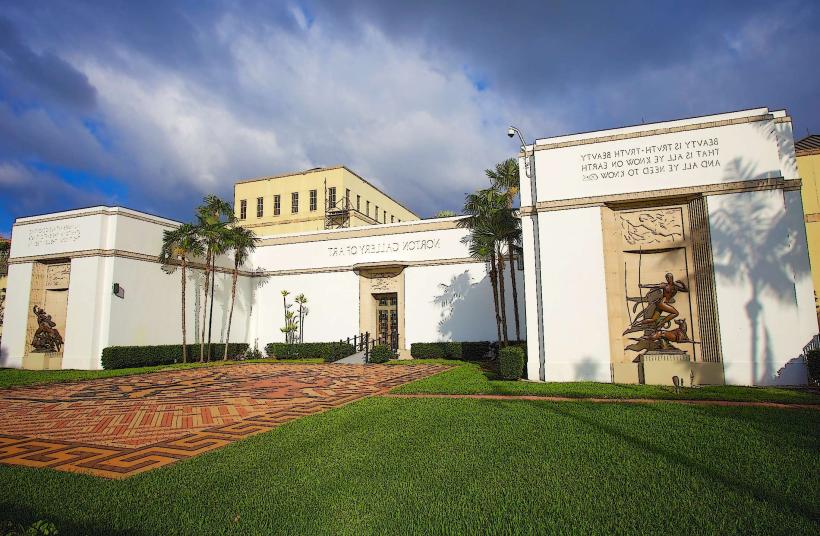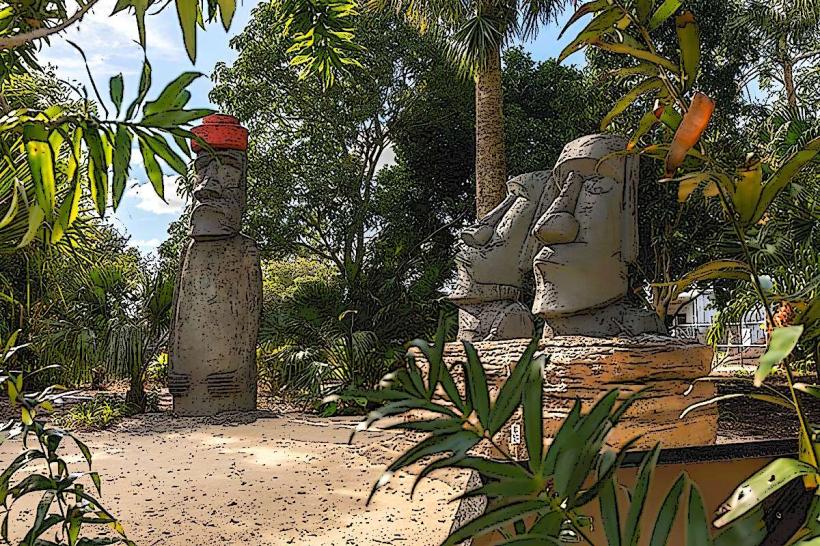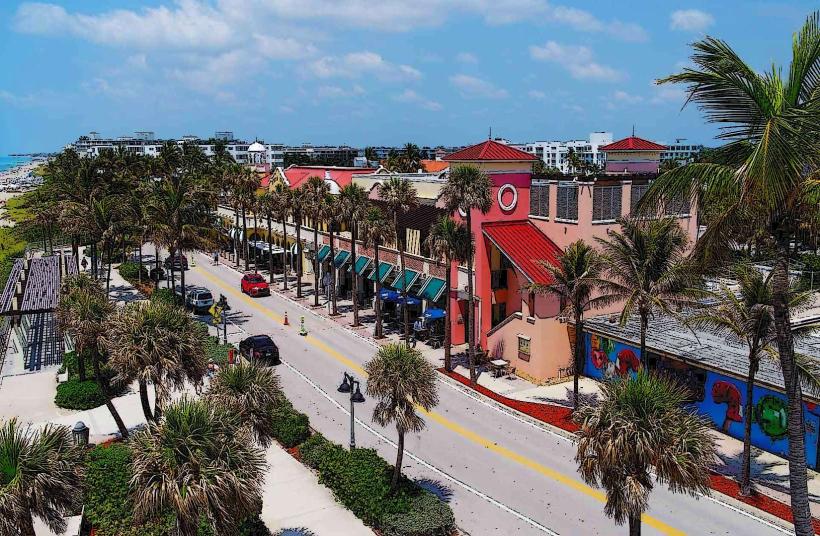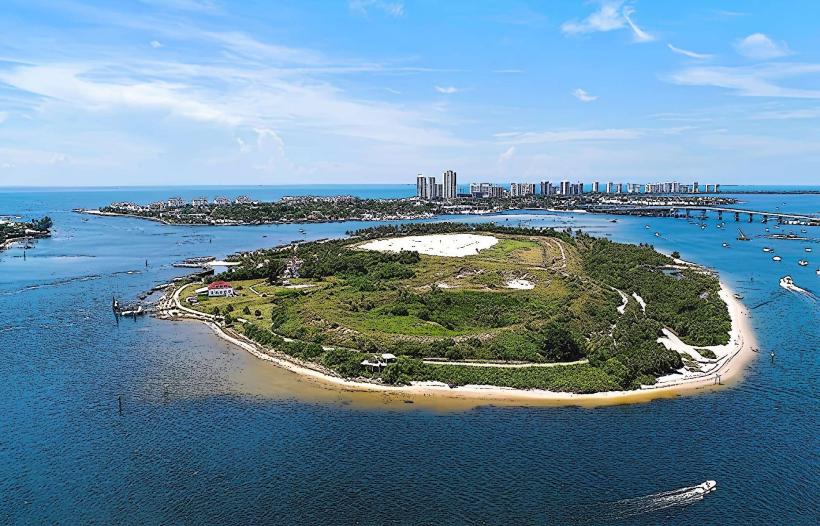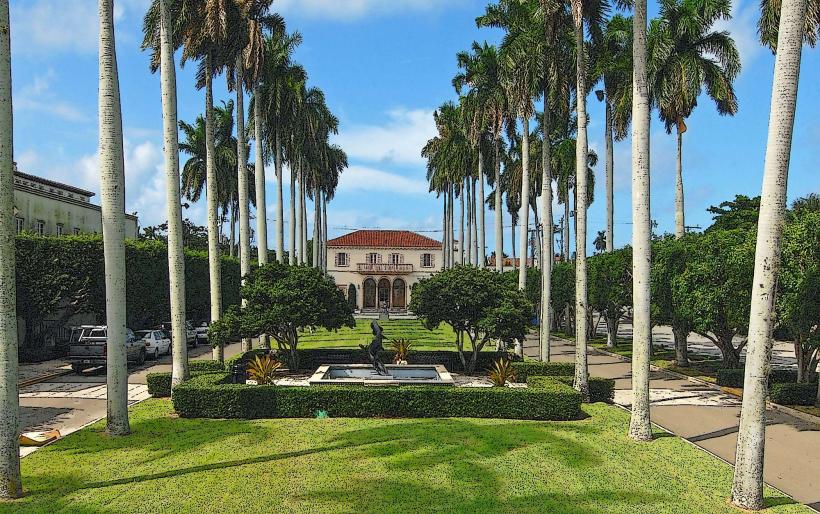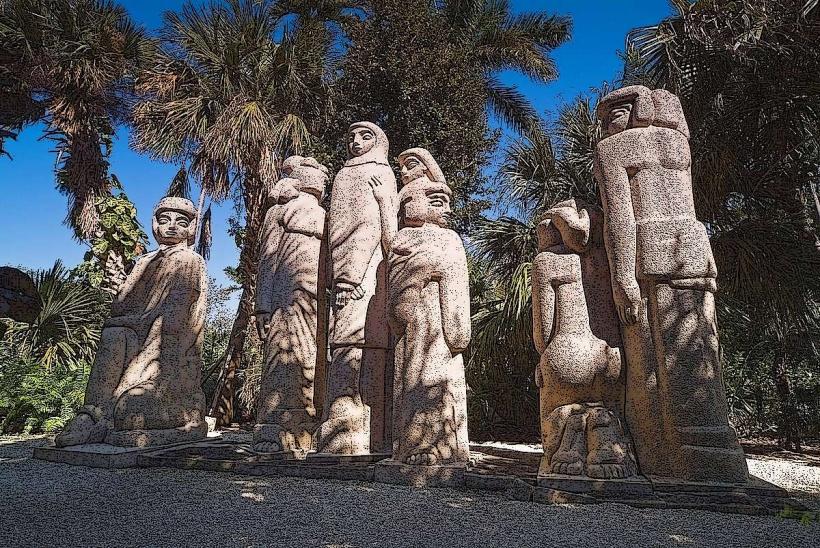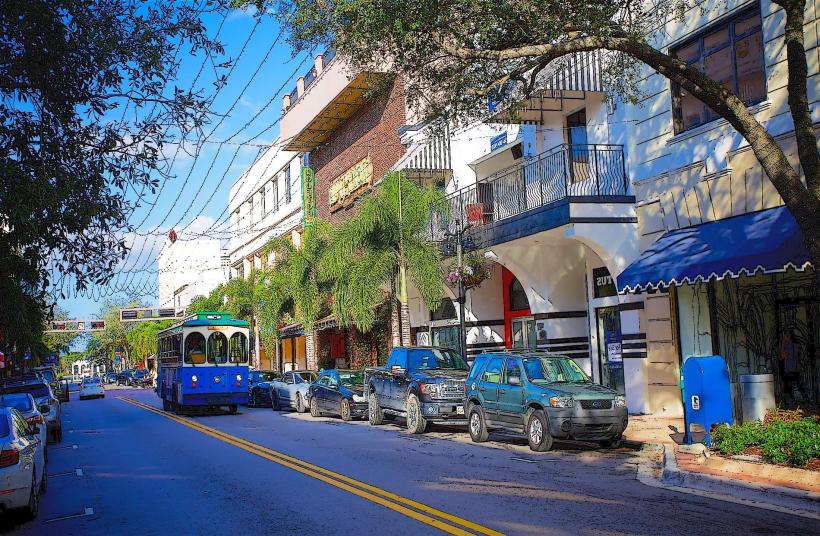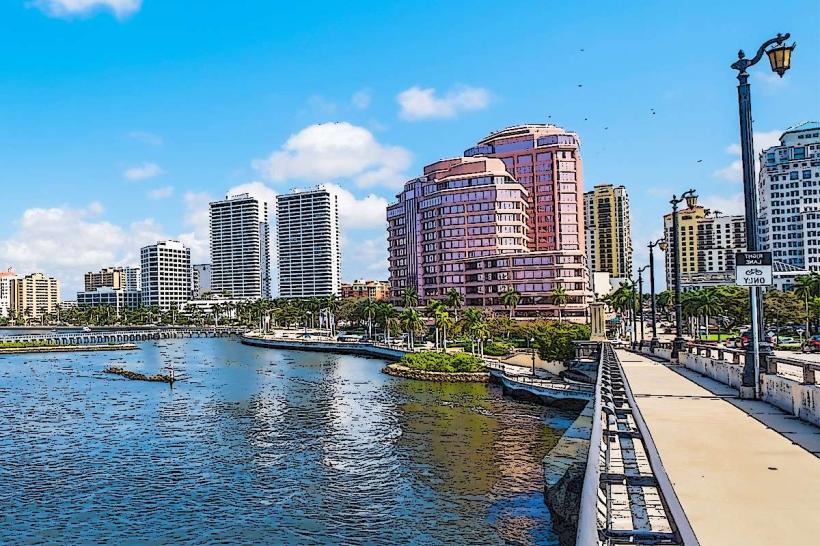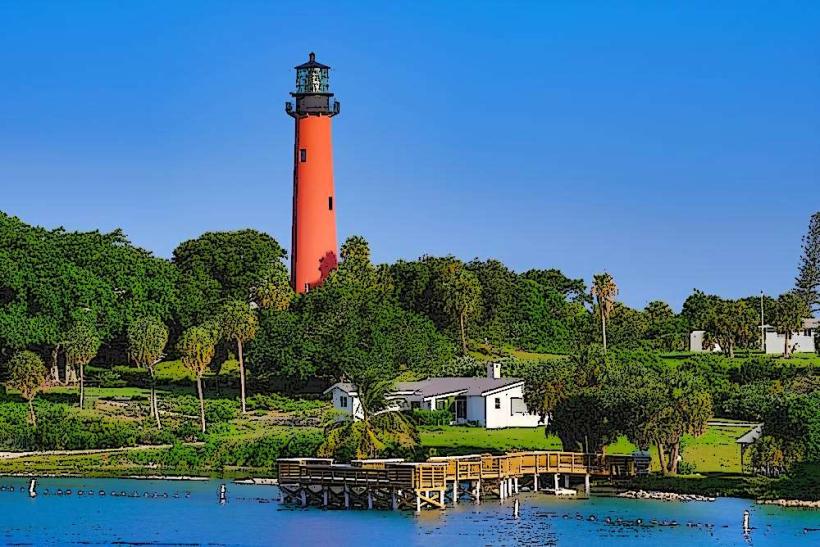Information
Landmark: Morikami Museum and Japanese GardensCity: Palm Beach
Country: USA Florida
Continent: North America
Morikami Museum and Japanese Gardens, Palm Beach, USA Florida, North America
Morikami Museum and Japanese Gardens: A Detailed Overview
The Morikami Museum and Japanese Gardens in Delray Beach, Florida, is a unique cultural and educational institution that showcases the beauty of Japanese culture, history, and landscape design. Spanning 200 acres and including several distinct gardens, the museum offers visitors a chance to explore a variety of exhibits, participate in cultural events, and experience a serene environment inspired by traditional Japanese aesthetics.
History and Origins
The origins of the Morikami Museum and Japanese Gardens can be traced back to the early 20th century with the establishment of the Yamato Colony, a community of Japanese immigrants who settled in Florida in 1904. The colony aimed to grow pineapples and other crops, but it was abandoned by the 1920s. George Morikami, the last surviving member of the colony, donated his 200-acre farm to Palm Beach County in 1973. In 1977, the Morikami Museum opened its doors to the public, with the goal of preserving the history of the Yamato Colony and showcasing Japanese culture. Over the years, the museum and gardens expanded, with significant additions including the Roji-en Japanese Gardens and the Main Museum building, which opened in 1993.
Museum Complex and Collections
The Morikami Museum consists of two main buildings:
Yamato-kan: This structure, originally opened in 1977, is designed to resemble a traditional Japanese villa. The building houses the permanent Yamato Colony exhibit, which explores the history of the Japanese community that once lived in Florida. Visitors can also find the Japan Through the Eyes of a Child exhibit, a hands-on gallery featuring Japanese toys, games, and cultural artifacts.
Main Museum Building: This modern facility, which opened in 1993, is a larger space dedicated to rotating exhibits that highlight various aspects of Japanese culture, art, and history. The museum is home to more than 7,000 objects, including classical and contemporary Japanese ceramics, textiles, woodblock prints, and fine art. There is also a theater for film screenings, lectures, and performances, as well as a museum store and café.
Some notable permanent collections and exhibits include:
Traditional Japanese Ceramics: This includes porcelain, stoneware, and earthenware, showcasing the artistry and craftsmanship of Japanese potters throughout history.
Textiles and Kimono: Visitors can view intricately designed kimonos and other traditional garments, demonstrating the importance of fabric and design in Japanese culture.
Contemporary Japanese Art: The museum also features modern Japanese artists, reflecting Japan’s evolving cultural landscape.
Roji-en Japanese Gardens
The Roji-en Gardens, which translates to "Garden of the Drops of Dew," is a 16-acre area featuring six distinct Japanese garden styles, each representing different historical periods and influences in Japan’s garden design history. These gardens are designed by Hoichi Kurisu, a renowned landscape architect known for his work in Japanese gardens in the United States. The gardens are meticulously planned to evoke tranquility and contemplation, and each section represents a unique aspect of Japanese culture.
The six main garden styles are:
Shinden Garden (Heian Period, 9th–12th Century): This garden, inspired by the elegant Heian period, features a large lake with islands and walking paths. The space is meant to be enjoyed by boat, with a sense of harmony between nature and architecture.
Paradise Garden (Kamakura/Muromachi Periods, 13th–16th Century): Modeled after the Buddhist concept of paradise, this garden uses a pond and symbolic elements like bridges and lanterns to represent the journey to the afterlife.
Early Rock Garden (Muromachi Period, 14th–16th Century): Reflecting the early Zen influence, this garden focuses on minimalism and features rocks arranged in patterns that are meant to symbolize elements like mountains and waterfalls.
Karesansui Garden (Late Muromachi Period, 16th Century): Often referred to as a “dry landscape” garden, the Karesansui style uses rocks, gravel, and sand to create scenes of nature, without the use of water. This garden encourages meditation and contemplation.
Hiraniwa Flat Garden (Edo Period, 17th–19th Century): This garden integrates elements of a tea garden, such as stepping stones, gravel paths, and low plants. It is a serene space that blends rocks and natural beauty with architectural elements like lanterns and bridges.
Modern Romantic Garden (Meiji Period, 19th Century): This garden reflects Western influences, mixing naturalistic elements with traditional Japanese aesthetics. It is meant to evoke a sense of peace and romance, with expansive plantings and flowing water features.
In addition to these six gardens, the Morikami also boasts a Bonsai Collection, featuring some of the most famous and carefully cultivated specimens in the United States. The bonsai garden is designed as a tribute to this ancient art form.
Cultural Events and Festivals
The Morikami Museum and Gardens hosts numerous cultural events throughout the year, many of which are inspired by traditional Japanese celebrations. These festivals are an opportunity for visitors to experience Japanese music, dance, art, and cuisine, and to engage in activities such as tea ceremonies, kimono dressing, and origami folding.
Some of the most popular events include:
Oshogatsu (New Year’s Festival): Held every January, this celebration marks the Japanese New Year with traditional activities such as calligraphy, origami, taiko drumming, and a ceremonial New Year’s tea.
Hatsume Fair: This annual event, held in April, celebrates the arrival of spring with a blend of Japanese culture and festival activities, including live entertainment, food, and arts and crafts.
Kodomo no Hi (Children’s Day): Held every May 5th, this festival celebrates the happiness and well-being of children with traditional Japanese games, crafts, and performances.
Lantern Festival: This event, held in the fall, celebrates the Japanese Obon Festival, a time to honor the spirits of ancestors. The event features floating lanterns on the gardens’ lakes, traditional dance, and performances.
Sunset Strolls and Twilight Yoga: In addition to festivals, the Morikami hosts evening programs like sunset strolls through the gardens and outdoor yoga sessions, offering a chance to enjoy the gardens in a peaceful, quiet setting.
Visitor Information
Location: Morikami Museum and Japanese Gardens is located at 4000 Morikami Park Road, Delray Beach, Florida 33446.
Hours: The museum is open Tuesday to Sunday, from 10:00 AM to 5:00 PM. The gardens are also open during these hours, with the last admission sold at 4:30 PM. It is closed on Mondays and major U.S. holidays.
Admission Fees:
Adults (18+): $16
Seniors (65+): $14
Students (with ID): $12
Military (with ID): $14
Children (6–17): $10
Children (5 and under): Free
Members: Free
Cornell Café: The museum’s café offers a variety of Japanese-inspired dishes, such as sushi, bento boxes, and traditional tea. It is open Tuesday through Sunday, from 11:00 AM to 3:00 PM.
Educational Programs
The Morikami Museum offers a range of educational programs, including guided tours, school field trips, and cultural workshops. They also provide internships in museum studies, archaeology, and Japanese language and culture. The museum’s volunteer program allows individuals to help with gardening, administrative tasks, and event coordination.
The Morikami Museum and Japanese Gardens is a true cultural gem that offers a peaceful, immersive experience into the world of Japanese art, culture, and nature, making it a must-visit destination for both residents and tourists in Florida.

